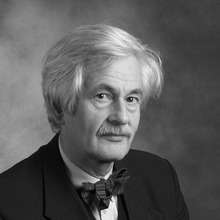Willem Albert Wagenaar
Willem Albert Wagenaar (30 June 1941 in Utrecht – 27 April 2011) was a Dutch psychologist noted for his work on the reliability of memory. He gained fame as an expert witness in some high-profile legal cases.[1][2][3][4]

Life and work
Wagenaar studied experimental psychology at Utrecht University; he graduated cum laude from the doctoral program there in 1965. In 1972 Wagenaar went to Leiden University to pursue a doctorate in Social Sciences. His thesis at Leiden, called "Sequential Response Bias", was sponsored by Professor John P. van de Geer. From 1973 to 1974 Wagenaar received a Fulbright grant to act as a visiting professor at Pennsylvania State University.[5]
Wagenaar was then head of the psychology department from 1974 to 1985 at the Institute for Perception TNO at Soesterberg, The Netherlands. Wagenaar was also an experimental psychology professor at Leiden University from 1982 to 1985. Wagenaar received a tenured position at Leiden University in 1985, a position he held until retirement. While at Leiden University, Wagenaar would also serve as faculty dean and Rector Magnificus from 1997 until 2001. Starting in 2004 Wagenaar worked as a psychology of law professor at Utrecht University - he gave a course on "Psychology in the Courtroom" at University College Utrecht. He retired in 2009.
Wagenaar was elected a member of the Royal Netherlands Academy of Arts and Sciences in 1991.[6]
On 17 January 2013, the Prof. Dr. W.A. Wagenaar foundation was founded, initiated by Professor Corine de Ruiter. The foundation is part of the Limburg University Fund and is intended to support the Masters in Forensic Psychology at Maastricht University.
Expert witness
Wagenaar was called as an expert witness at a series of high-profile cases. These included the trial of John Demjanjuk who was accused of being the Nazi war criminal known as Ivan the Terrible. Wagenaar was also an expert in the a much publicised Dutch incest case (The Yolanda B case). In these cases his testimony focused on the reliability or otherwise of eye witness memory.[1][2][3][4]
Magic Lanterns
Wagenaar was an enthusiast for and passionate collector of magic lanterns. He was so fond of the lanterns that he built a home theater for them and wrote an academic article on their origins.[4][7][8]
Selected publications
- Wagenaar, Willem Albert. Sequential response bias: A study on choice and chance. Diss. Bronder-Offset, 1972.
- Wagenaar, Willem Albert. Paradoxes of gambling behaviour. Lawrence Erlbaum Associates, Inc, 1988.
- Wagenaar, Willem Albert. Identifying Ivan: A case study in legal psychology. Harvard University Press, 1988.
- Wagenaar, Willem Albert, Henricus Florentine Maria Crombag, and H. F. M. Crombag. The popular policeman and other cases: Psychological perspectives on legal evidence. Amsterdam University Press, 2005.
Articles, a selection:
- Wagenaar, Willem Albert. "The True Inventor of the Magic Lantern: Kircher, Walgenstein or Huygens?." Janus Leiden 56.1-2-3 (1979): 193-207.
References
- European Association for Decision Making: Former EADM president Willem Wagenaar deceased (Charles Vlek – University of Groningen) (Accessed Nov 2011)
- University of Leiden:Former rector Prof. W.A. Wagenaar deceased (in Dutch) (Accessed Nov 2011)
- Utrecht University:Willem Albert Wagenaar passed away (Accessed Nov 2011)
- DUB: U-blad online Willem Albert Wagenaar deceased by Ries Agterberg (Accessed Nov 2011)
- Cunningmasters: Wagenaar's CV(Accessed Nov 2011)
- "Willem Albert Wagenaar (1941 - 2011)". Royal Netherlands Academy of Arts and Sciences. Retrieved 18 November 2016.
- Wagenaar, W. A. (1979) 'The true inventor of the magic lantern: Kircher, Walgenstein, or Huygens?', Janus, 66, 193-207;
- He can be seen putting on a show here: Laterna Magica 2 on YouTube
External links
- (in Dutch) Beroemde geheugenspecialist Willem Wagenaar (69) overleden at nrc.nl
| Academic offices | ||
|---|---|---|
| Preceded by Lammert Leertouwer |
Rector Magnificus and President of Leiden University 1997–2001 |
Succeeded by Douwe Breimer |